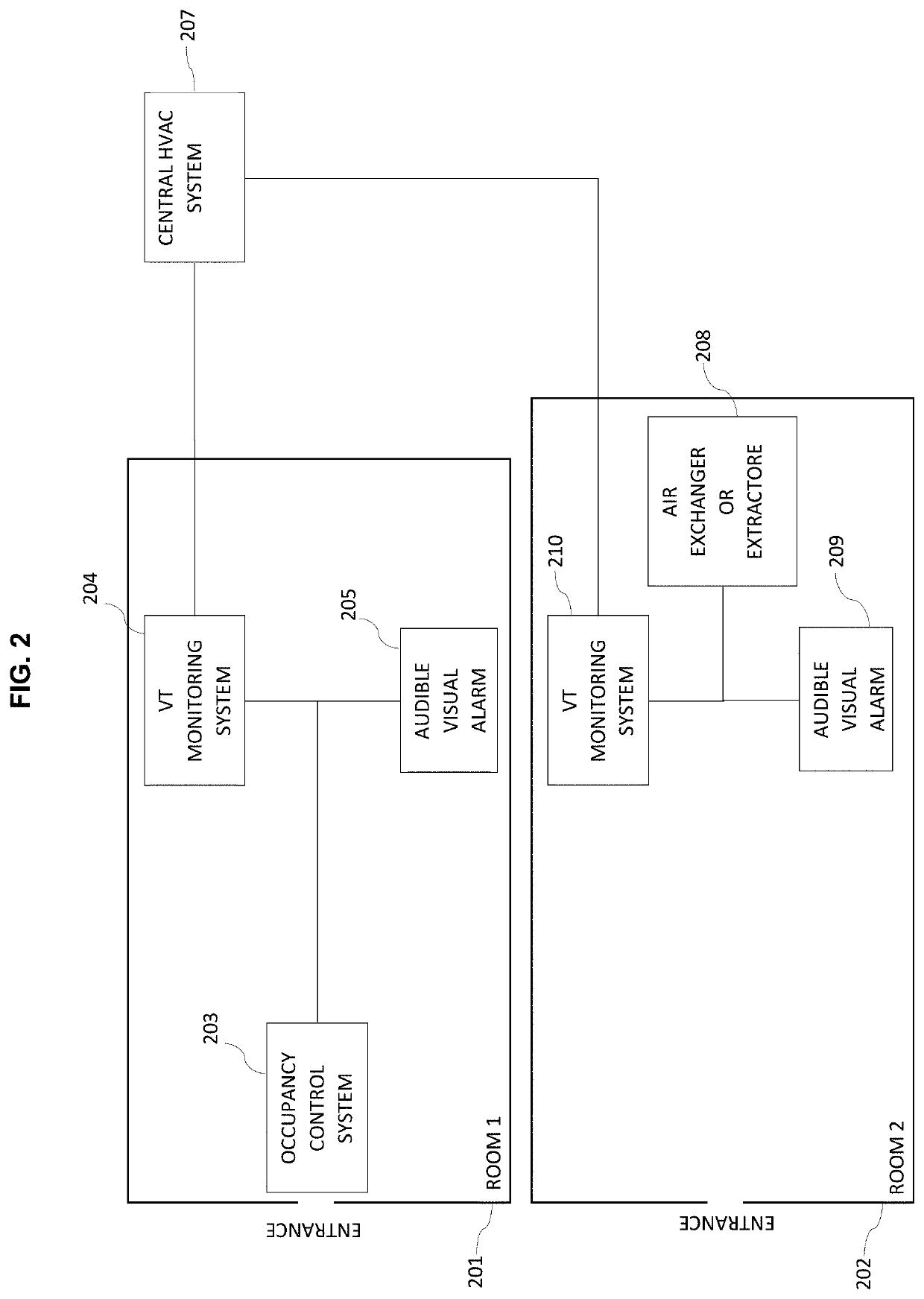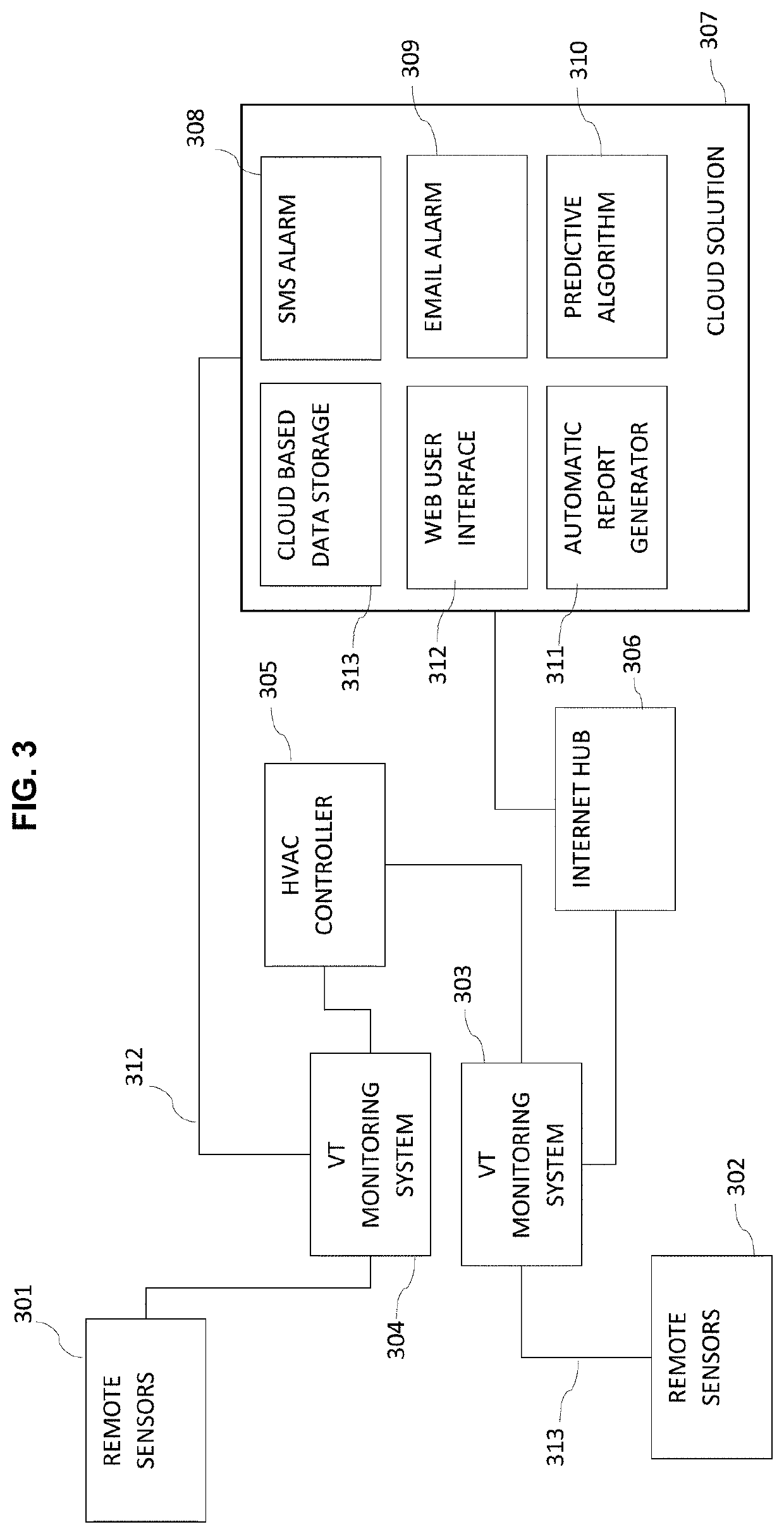System for monitoring the probability of viral disease transmission
- Summary
- Abstract
- Description
- Claims
- Application Information
AI Technical Summary
Benefits of technology
Problems solved by technology
Method used
Image
Examples
Embodiment Construction
[0027]The Viral Transmission Monitoring System 100, illustrated in FIG. 1 consists of environmental sensing system 101, a VTS processing unit 122, and user interface 123, with optional occupancy sensing system 110.
[0028]The environmental sensing system 101, comprises of (but not limited to) carbon dioxide sensors 102, fine particulate sensors 105 capable of measuring particulate mass concentration in the ambient air, temperature sensors 104, and relative humidity sensors 103.
[0029]The occupancy sensing system 110, may use cameras 108 and an image processing program to count the number of occupants in the enclosed space. Alternatively, an RFID sensor 107 can be used to count the number of occupants given that each occupant has an RFID transponder for example in the form of an access card or pre-installed on each shopping cart. The number of occupants can also be determined through a door sensor 109 or an IR sensor 106. Other technologies can also be used to provide either count of th...
PUM
 Login to view more
Login to view more Abstract
Description
Claims
Application Information
 Login to view more
Login to view more - R&D Engineer
- R&D Manager
- IP Professional
- Industry Leading Data Capabilities
- Powerful AI technology
- Patent DNA Extraction
Browse by: Latest US Patents, China's latest patents, Technical Efficacy Thesaurus, Application Domain, Technology Topic.
© 2024 PatSnap. All rights reserved.Legal|Privacy policy|Modern Slavery Act Transparency Statement|Sitemap



